How Many Different Types of Whales Are There?
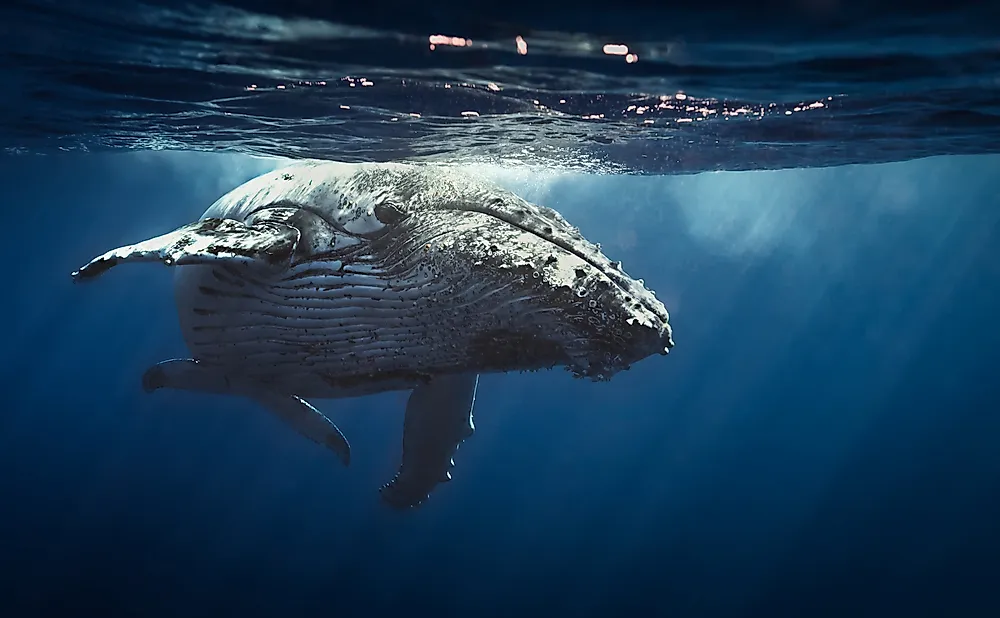
Whales are marine mammals that belong to Order Cetartiodactyla, Whippomorpha Suborder in the Cetacea Infraorder. Whales are warm-blooded animals whose bodies are covered by a layer of fat and have two limbs which have evolved to become flippers. All whale species breathe air regularly and hence must come to the surface for the same. Whales comprise of 8 families that are fully adapted to living in water.
Conservation of Whales
Conservation of whales is an international debate that touches on the environment and ethics. Extensive hunting of whales has led to their diminishing triggering anti-whaling debate. Whales have an important role in balancing the ecosystem and maintenance of a healthy marine setting. The conservation efforts are spearheaded by the International Whaling Commission (IWC) of 1986. Today, there are several species of whales listed as Endangered species by the IUCN.
The Eight Whale Families
8. Rorquals (Balaenopteridae)
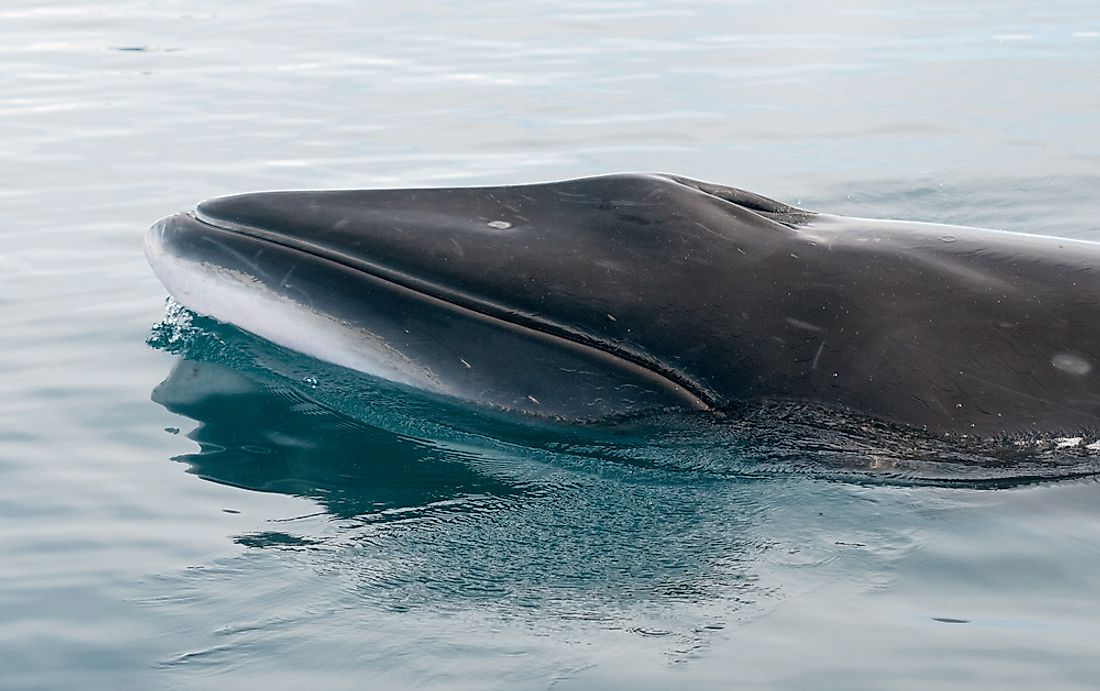
Rorquals are rated as the largest baleen whales hence the largest mammals. Blue whales which belong to this group can be as heavy as 180 metric tonnes. There are nine extant species including the Fin whale, Sei whale, Bryde's whale, Eden's whale, Blue whale, Common minke whale, Antarctic minke whale, Omura's whale, and Humpback whale. Rorquals are comparatively slender and streamlined with dorsal fins located about two-thirds distance to the back. The Bryde’s and Eden’s whales can be found close to the shore, the Antarctic whales thrive in cold waters in the extreme south while the sei whales live in the northern hemisphere. Breeding takes place in tropical waters before they migrate to the polar feeding grounds. The gestation period is 11 to 12 months. Rorquals obtain prey by a technique called lunge feeding which involves accelerating at a very high velocity then opening the mouth. This way, huge amounts of water is engulfed and filters prey through baleen plates. All members of Rorquals family have numerous longitudinal folds of skin that run from beneath the mouth to the navel forming furrows which make the mouth expand when feeding.
7. Right Whales (Balaenidae)
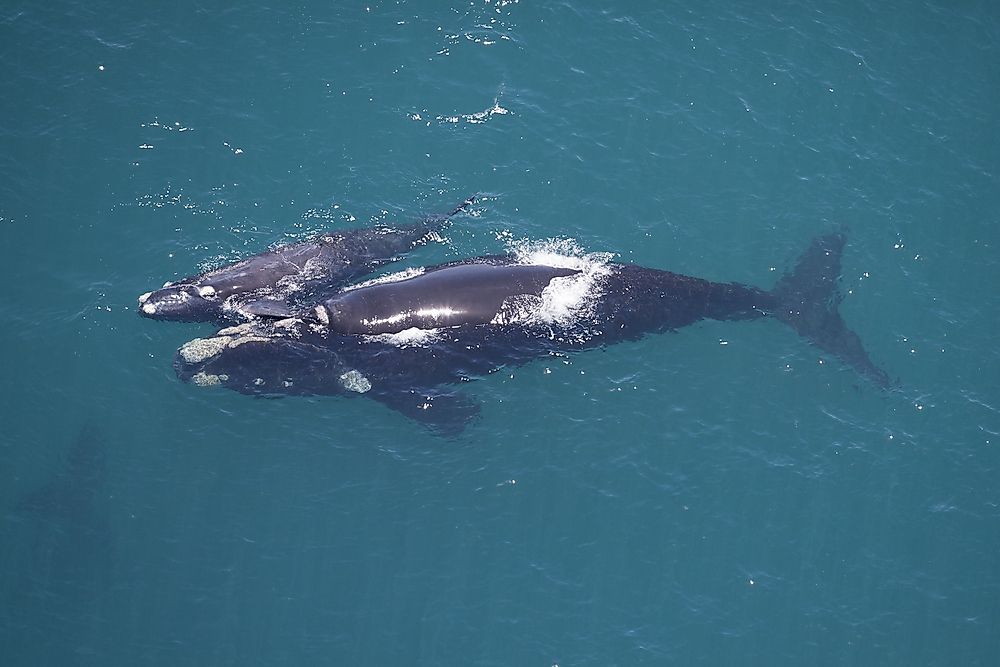
Family Balaenidae comprises of the three species of right whales (North Atlantic right whale, North Pacific right whale, and Southern right whale) and the bowhead whale. An adult Balaenidae has a length of 45 to 50 feet and can weigh up to 80 tonnes. The unique feature is arched, narrow upper jaw which makes the mammal have a deeply curved jawbone. The baleen plates are long making it possible to float near the water surface. The adaptation makes the whales strain small crustaceans and krill from the water then scrape the baleen with the tongue. Right whales have a robust structure in comparison to other whale species but do not have a groove along their throat. The head is exceptionally big in comparison to the body size because it reaches up to 40% of the total body length. The flippers are short and broad with the absence of dorsal fin.
6. Pygmy Right Whales (Cetotheriidae)
Pygmy right whales belong to the cetotheres classification and are the smallest whales in the baleen group. The whales are domiciled in the Southern Ocean along the Southern Hemisphere. An adult can weigh up to 3,430 kilograms and have a length of 17.9 feet. Pygmy right whales are dark gray or light gray, with light patches behind the eyes. The arched jawline can be confused with other whale species since it is not very pronounced. The baleen plates are usually long and cream in color although the gumline is white. The main food is euphausiids and copepods. Scientists holds very little information on this species of whales as they were thought to be extinct before 2012.
5. Grey Whales (Eschrichtiidae)
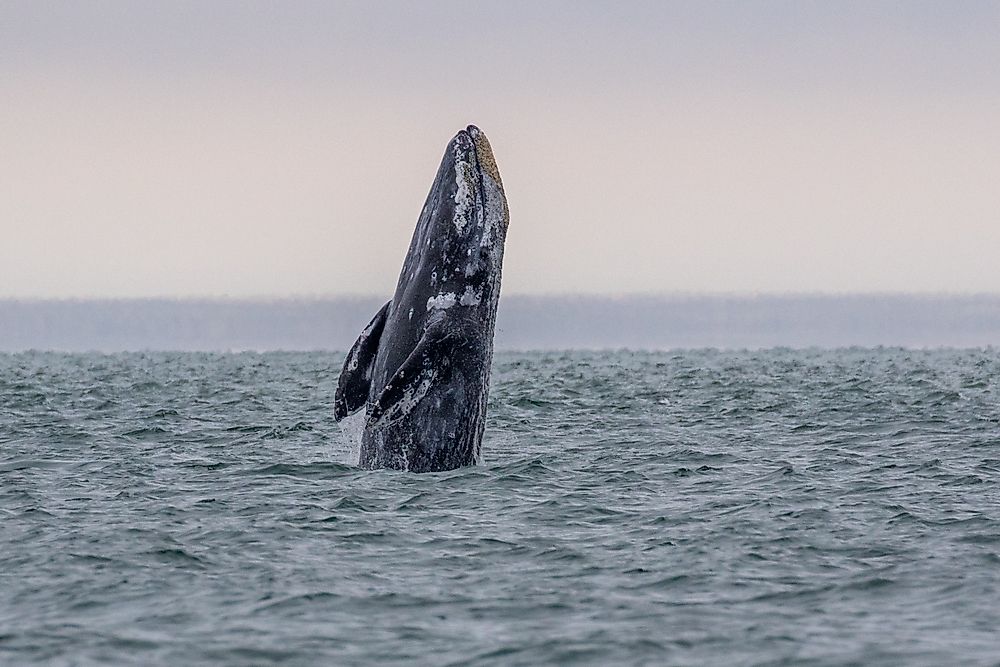
Grey whales derive their name from the gray patches and the white mottling pattern common on its dark skin. The whale is also called the Pacific gray whale, gray whale, California gray whale, and gray back whale. Gray whales belong to Eschrichtiidae family in the Eschrichtius Genus. The species are found in the North Pacific and quite an endangered species. The distinctive feature is the double blow holes on the tip of the head which appear like a heart-shaped bow in calm waters. An adult can grow up to 49 feet and weigh 36 tonnes. The unique feature a stiff lone hair on the depression on the upper jaw. Gray whales are further identified from other mysticetes by their short cream baleen.
4. Belugas and Narwhals (Monodontidae)
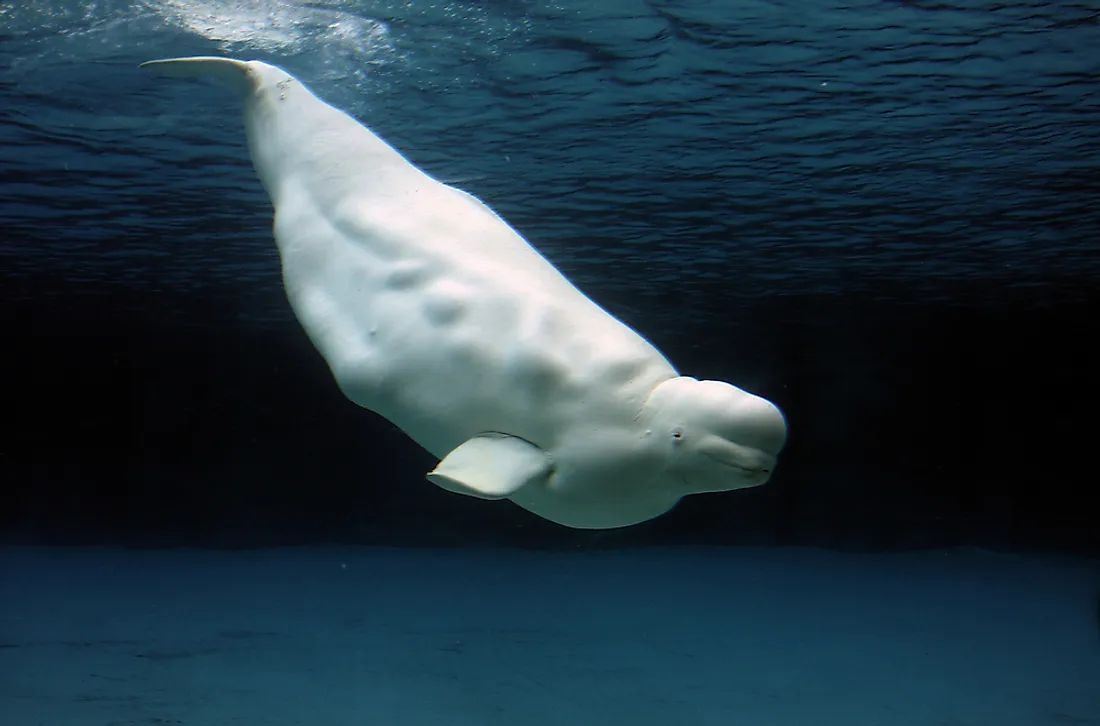
Monodontidae is in the cetacean family and is subdivided into two species namely the beluga whale and narwhal whales. Beluga whale is purely white and majorly at the northern region of Pacific and Atlantic oceans. The narwhal whales live in the Arctic and Atlantic oceans. The whale species has a considerable length of three to five meters with a melon-shaped forehead. Monodontidae doesn’t have real dorsal fin and in exchange, they have a slim ridge at its back which is more common in the narwhal. The beluga has numerous but simple teeth whereas the narwhals have only two teeth of which one forms a tusk in males. Gestation period is between 14 to 15 months which after which one newborn is brought forth. The whale species are so active and communicate using various sounds just like other whales. Monodontidae feeds on fish, mollusks, and crustaceans.
3. Sperm Whales (Physeteroidea)
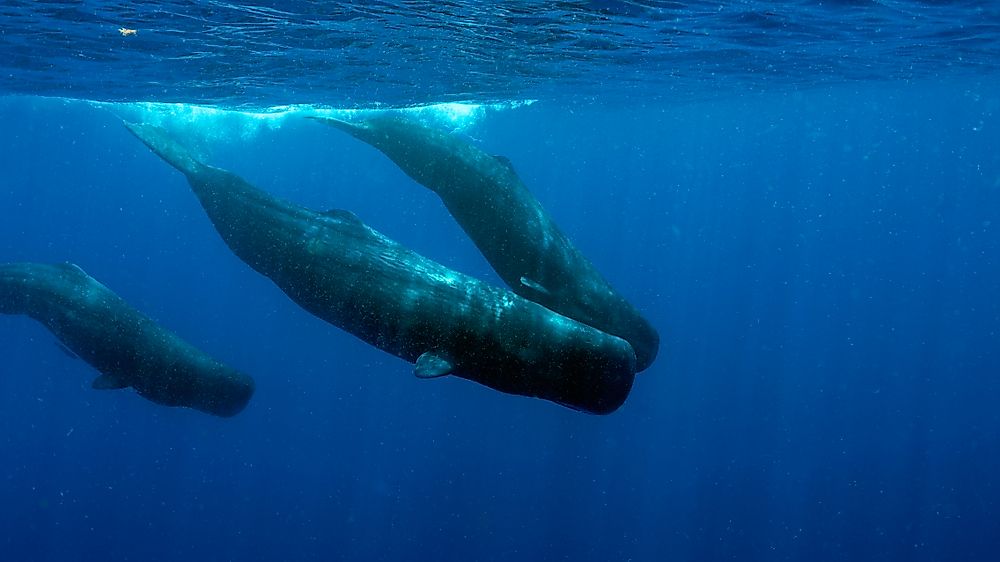
Sperm whales derive the name from the spermaceti which is a waxy semiliquid substance that fills the spermaceti organ located in its head. The white substance plays a major role in reproduction and also in locating sounds which assist in locomotion. Sperm whales are of Physeteridae family in the Genus Physeter. Adult males can attain a weight of 45 to 70 metric tonnes making the sperm whales the biggest among the toothed whale species. Sperm whales also have the largest brains of all world's animals. The general appearance is a robust proportioned body structure with flippers that look like paddles. The lower jaw is smaller than the upper one while the nasal bones are asymmetrical. The teeth are numerous but simple. Sperm whales rely more on echolocation than vision since their eyes cannot swivel in the sockets. Sperm whales are known to dive deep into the ocean water in search of food. The gestation period is between 9 and 15 months. Sperm whales live in herds composed of the mothers, calves and young males.
2. Dwarf and Pygmy Sperm Whales (Kogiidae)
There are two extant species in the Kogiidae family namely dwarf sperm whales and the pygmy whales. They are the smallest species measuring 8.5 feet long and weigh approximately 400 kilograms. The head is squared, the lower jaw is smaller than the upper jaw, and behind the eyes there is a false gill slit. The unique feature is the skull which has a comparatively short rostrum, is asymmetrically balanced, and has a very blunt mandible. The dorsal fin is more conspicuous than that of the sperm whale while their teeth are the same size and similar shape. All Kogiidae whales produce unique sounds from their bagpipes-like organ and body system. Defense from predators is by the release of more than three gallons of fecal ink-like substance which confuses the predators. As deep-diving whales, Kogiidae can dive to depths of up to 500 meters. Feeding is from squid by suction feeding technique
1. Beaked Whales (Ziphiidae)
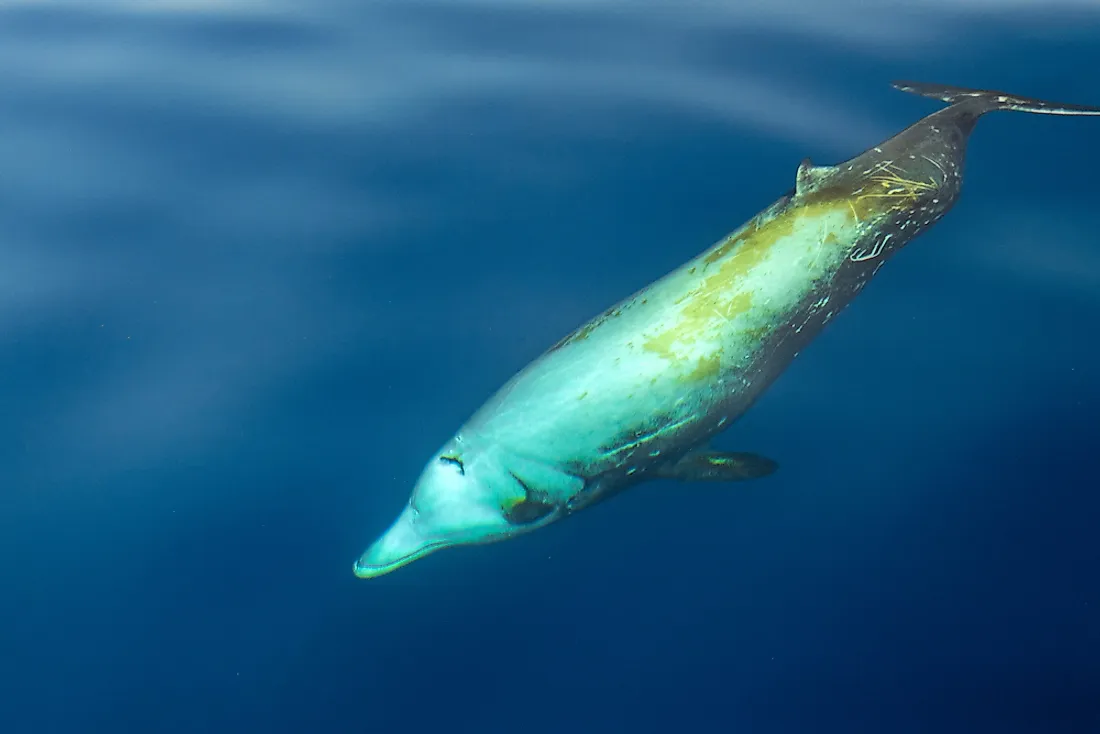
Ziphiidae whales belong to family Ziphiidae, which comprises 22 species of deep-sea living whales. The name is due to their beak-like mouth tip which is elongated making them extreme divers. The longest recorded dive depth was 9,816 feet and took 137.5 minutes. The size of the beaked whales is moderate ranging from 13.1 to 42.7 feet and a weight of up to 15 tonnes. The toothed whales have a unique dentition of just one pair of teeth which is hidden by the gum tissues. Other unique features are two-converging grooves beneath the throat, the absence of a notch normally found in the tail fluke and a bulging head in males. The blubber in most of the species is made of wax ester. Feeding is by the suction technique whereby the prey is sucked into the oral cavity.











